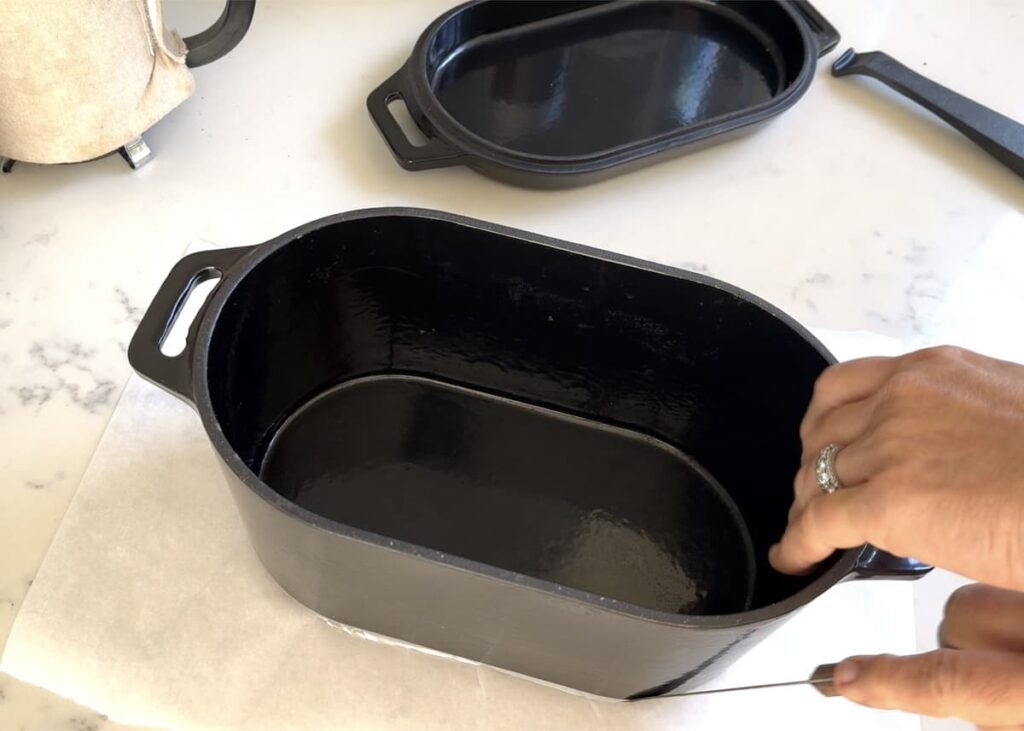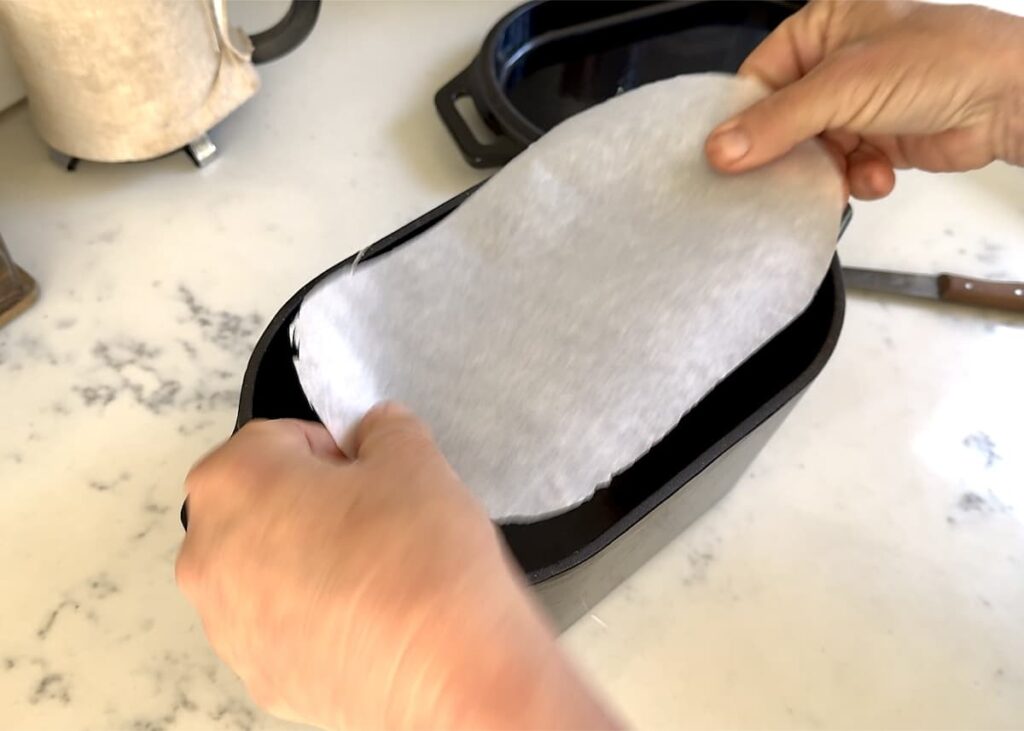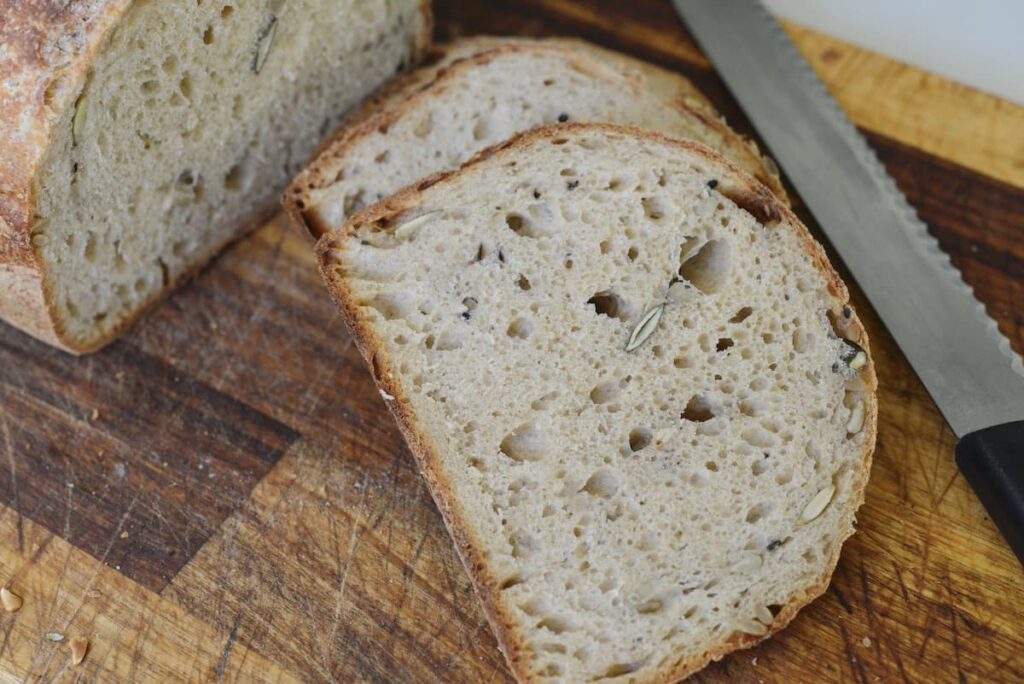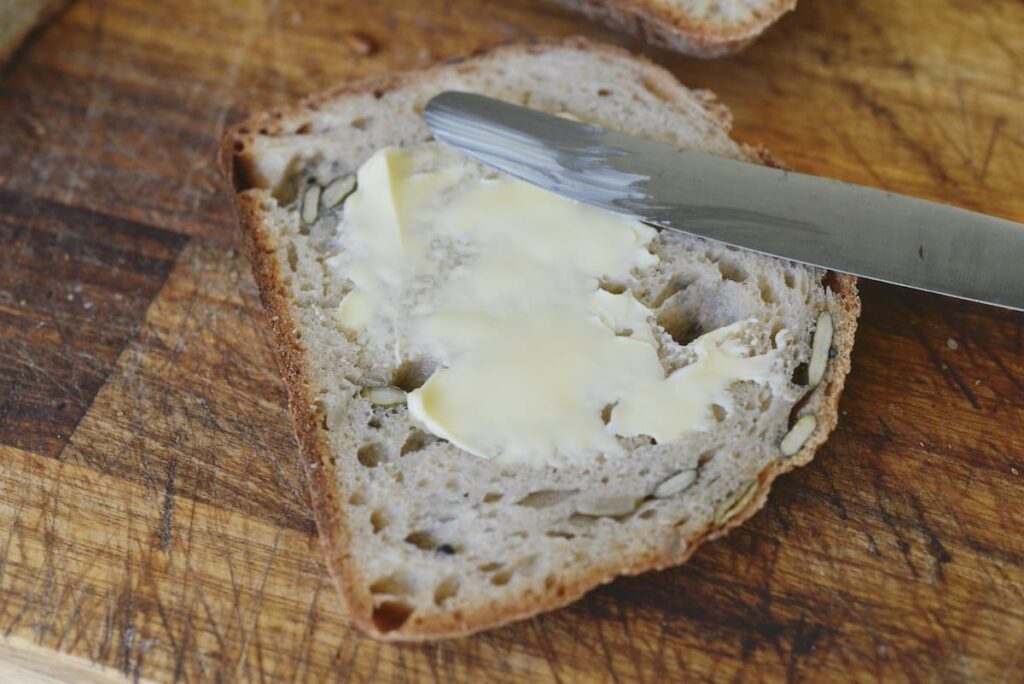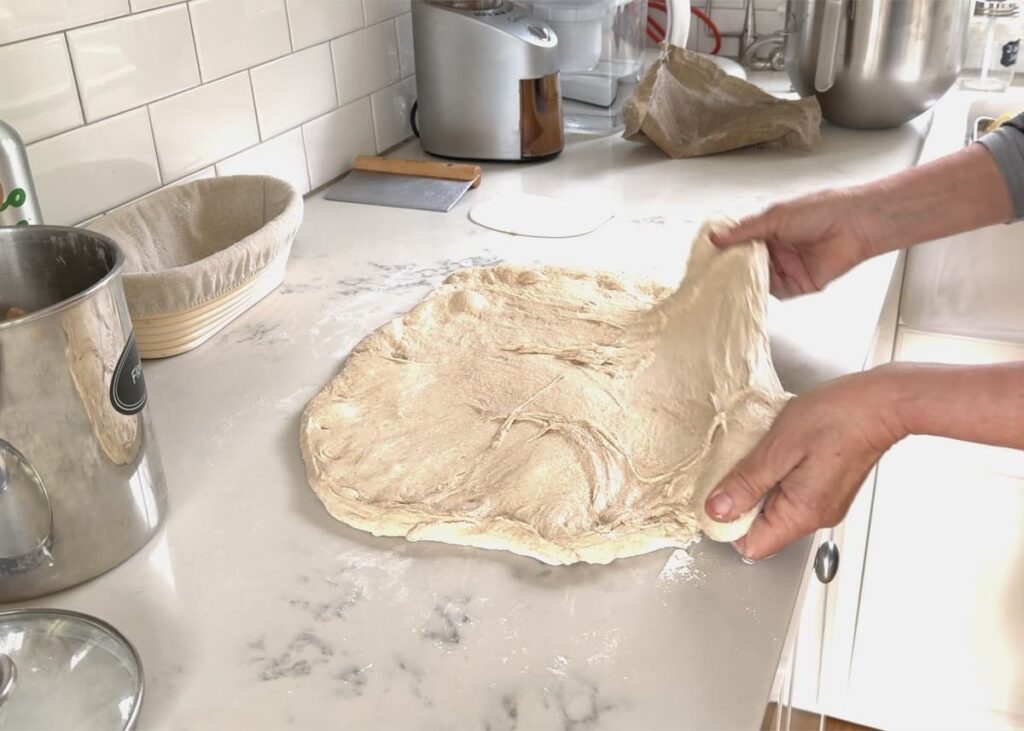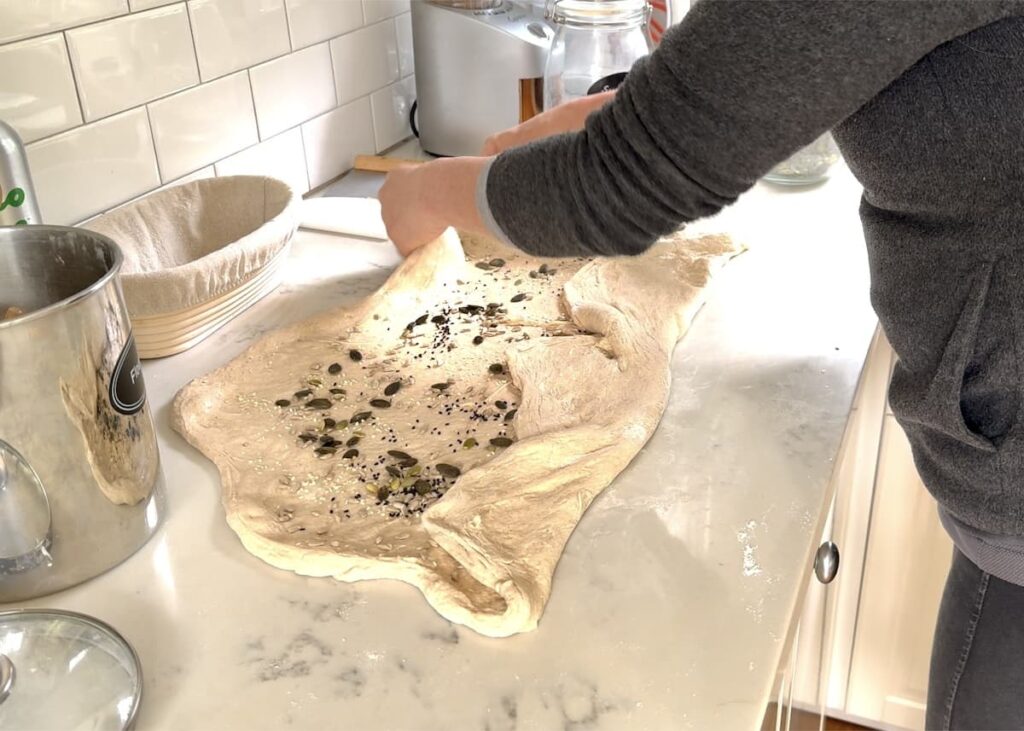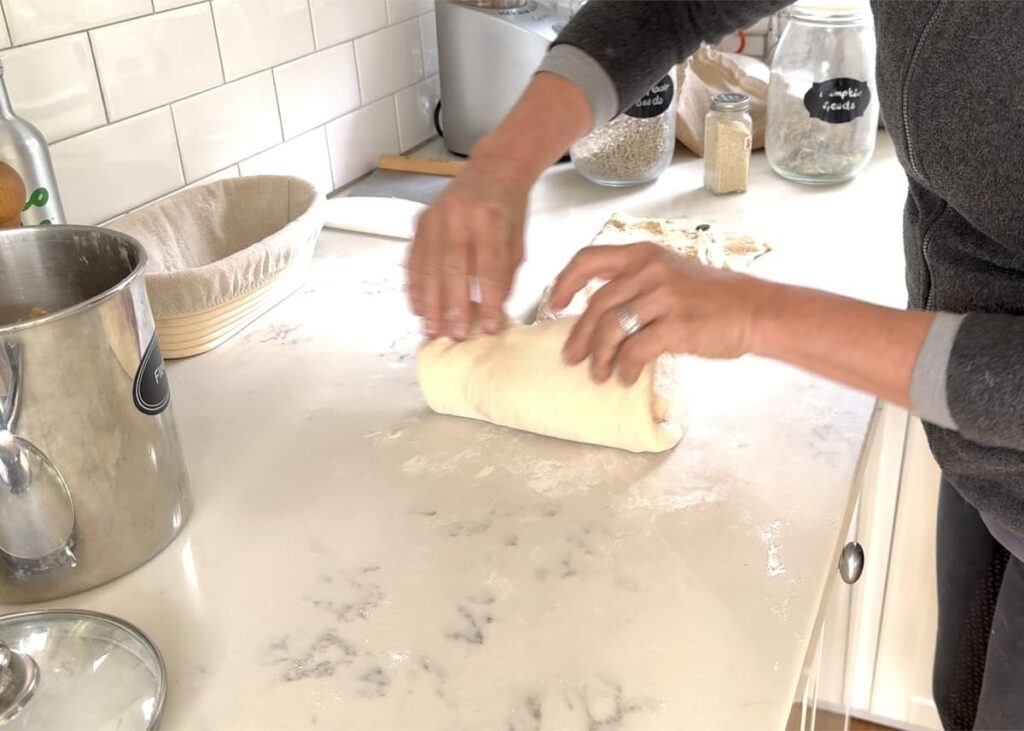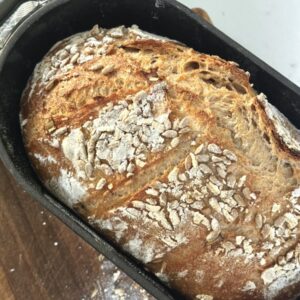Easy Seeded Sourdough Sandwich Bread
This seeded sourdough sandwich bread has it all: a golden-brown crust, a soft, airy crumb, crunchy seeds, and a nice sourdough flavor.
Whether you’re a seasoned sourdough baker or just getting started with artisanal bread baking, I am sure you will love this seeded sourdough sandwich bread just as much as we do!
You can even start to play with the ingredients and ratios to make this recipe just how you like it!
This post contains affiliate links, which means I make a small commission at no extra cost to you. You can read my full disclosure.
Why You Will Love This Recipe
I am sure this seeded bread will be your new favorite since
- it is easy to make
- it is delicious
- you can swap out the ingredients for what you have
- the addition of seeds makes it more interesting and crunchy
- it makes the perfect sandwich bread
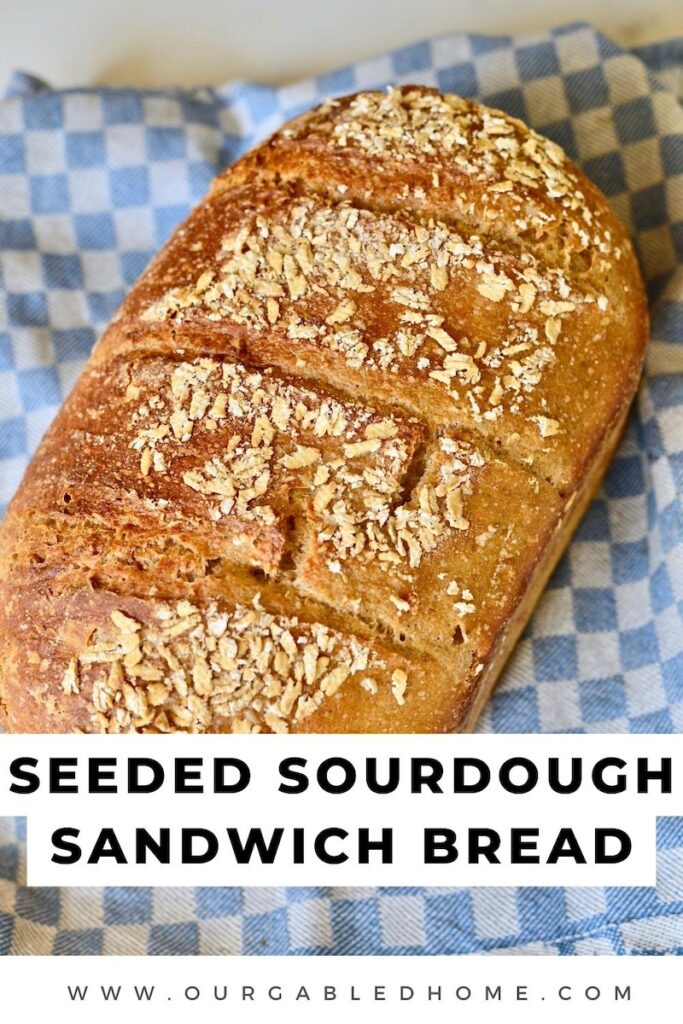
The Ingredients
This is what you will need:
- AP flour: I use organic all-purpose flour
- Whole-grain flour: I like to mill fresh flour from ancient grains (such as Kamut and Emmer) with my grain mill
- Salt: A high-quality sea salt brings out and enhances the flavor
- Sourdough starter: If you don’t already have an active sourdough starter you can easily make a sourdough starter with this simple method
- Seeds: I always like a combination of pumpkin seeds, sunflower seeds, sesame seeds, and poppy seeds
Useful tools and equipment
In addition to what you probably already have in your kitchen, I recommend:
- Grain mill: Freshly milled flour is always best and I love my high-quality grain mill but you can certainly buy whole-grain flour
- Stand mixer: Of course, you can mix the dough by hand but I love using my Kitchenaid stand mixer
- Kitchen scale: I highly recommend you use an inexpensive kitchen scale
- Loaf pan: You can use any rectangular loaf tin but I like using an enameled cast iron Dutch oven
- Parchment paper: If you’re using this enameled Dutch oven, I recommend lining it with parchment paper
- Dough scraper: A dough scraper helps to remove the dough from the bowl or the bannetton
- Bench scraper: Not extremely necessary but helpful for shaping the loaf
- Scoring lame: While a dedicated scoring lame is very useful, you can use a very sharp knife as well
- Bannetton: Letting the dough proof in a bannetton or proofing basket keeps its shape
- Baking kit: The last four items also come in a convenient proofing kit
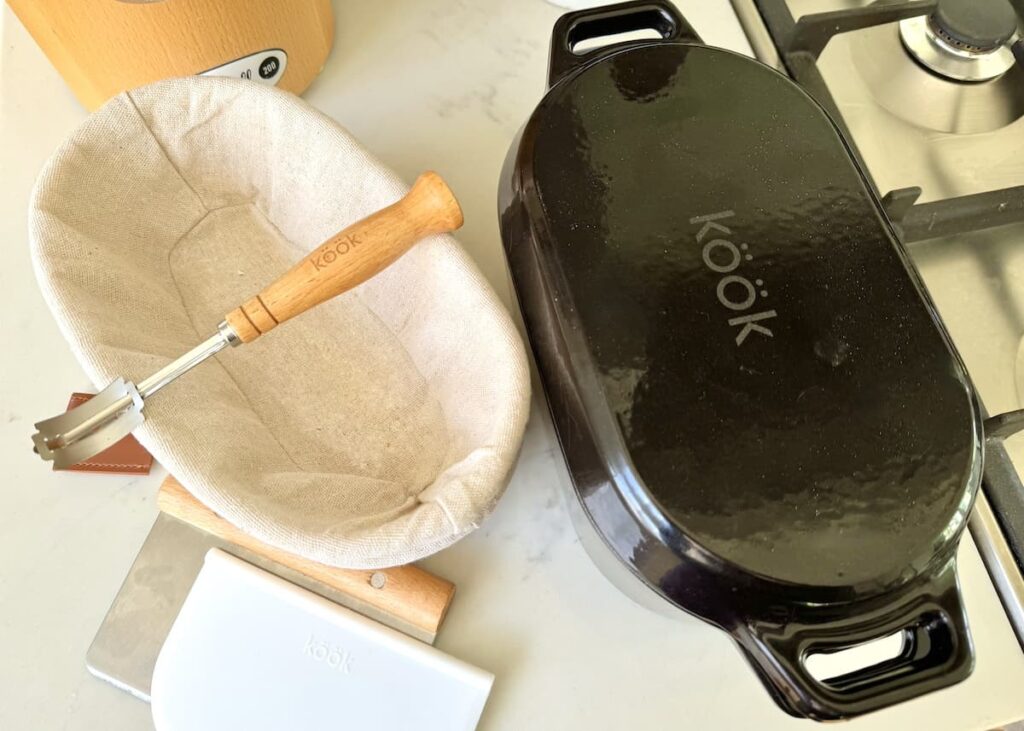
Substitutions and variations
This is the fun part:
- Flour: You can make this a 100% whole wheat bread by using whole wheat flour instead of AP flour. Just know that the bread will be a bit more dense then. You can also use bread flour, oat flour, white spelt flour, or light rye flour
- Grains: You can use any grains you have or like: einkorn, spelt, kamut/khorasan, rye, harvest grains blends, or just plain wheat berries
- Seeds: You can use any seeds or seed mixture you like: flax seeds, chia seeds, black sesame seeds, hemp seeds, or even a handful of whole grains
- Nuts: If you prefer a more nutty flavor, you can add some walnuts, pecans, or hazelnuts
- Sweeteners: I personally don’t like to add any sweeteners but some people like to offset the sourdough flavor with a tablespoon of maple syrup or honey in their dough
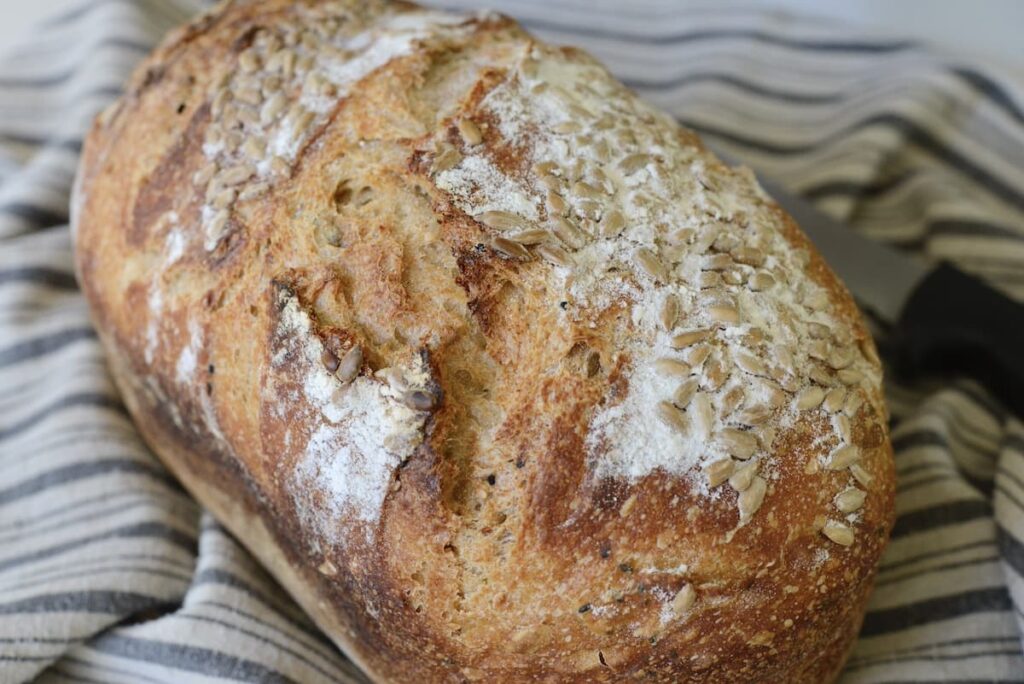
Tips for success:
- Don’t worry if you have a very sticky dough. Resist the temptation to add more flour. Instead, use wet hands to perform stretch and folds to help the gluten development.
- You can use an oval or round Dutch oven (if you prefer a round shape), either cast iron or enameled
- Instead of a banetton, you can line a medium bowl with a tea towel and use that as a proofing vessel
- If you don’t have a Dutch oven, you can use a large loaf pan that you just cover with aluminum foil the the first half hour of baking
- I like to trace the bottom of my oval Dutch oven on parchment paper and line the bottom of the Dutch oven with it to make it easier to remove the baked bread
How to keep it fresh
Sourdough bread is always best when it’s fresh. We like to keep it on the counter either in a bread bag, some beeswax wrap, or a paper bag where it easily keeps for 2-3 days.
If you know you won’t finish it by then, you can cut the fresh loaf in half or into slices and freeze them tightly wrapped in plastic.
Other sourdough bread recipes you might like
European-Style Whole Grain Bread
Sourdough Bread with Olive Oil
How To Make:
1. Mix the dough
To the bowl of your stand mixer or a large bowl add the warm water and sourdough starter. Mix on low speed with the dough hook attachment until combined. Then add the flours and mix first on low until all the flours are incorporated and then on medium-low for about 5 minutes. Cover the bowl with a tea towel and let the dough rest for 1 hour in a warm place. Now add the salt and mix again. Let the dough rise for 30 minutes.
2. Stretch-and-Folds
With wet hands perform a few stretch-and-folds (lift one side of the dough up, stretch it and fold it over the dough, then turn the bowl 90 degrees and repeat a few times). Let the dough rest again for 30 minutes and repeat this 3 more times. Tightly cover the bowl with beeswax wrap or plastic wrap and transfer the bowl to the refrigerator overnight or for about 8 hours for the bulk fermentation.
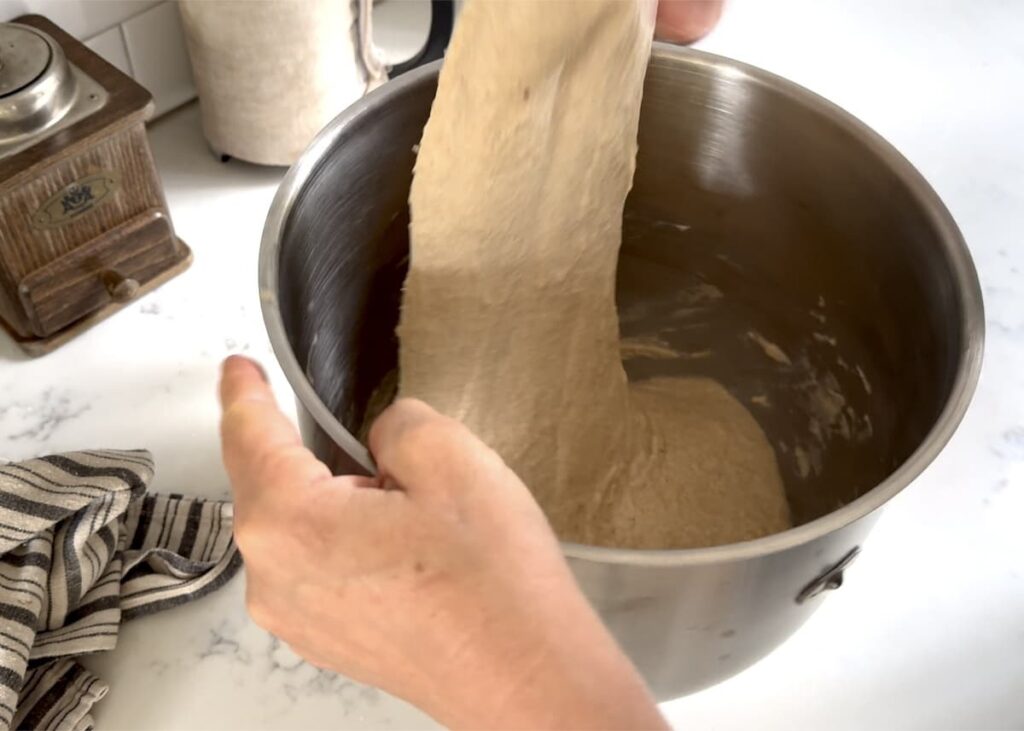
3. Add the seeds
The next day, remove the dough from the refrigerator and let it come to room temperature. Generously sprinkle flour on your work surface. With the dough scraper dump the dough onto the floured surface. Lightly flour your hands and gently pull the dough in all four directions to create a rectangle. Ideally, the dough should not tear. Sprinkle the seeds onto the dough.
4. Shape the loaf
Fold the long sides of the dough rectangle over towards the middle. Then starting at one side, roll the dough into an oval loaf. With the bench knife, create some surface tension by stretching the dough underneath itself.
Heavily dust the bannetton with flour or rice flour. You might like to also sprinkle your proofing basket with various seeds. Transfer the shaped dough to the proofing basket, cover it with beeswax or plastic and return it to the refrigerator.
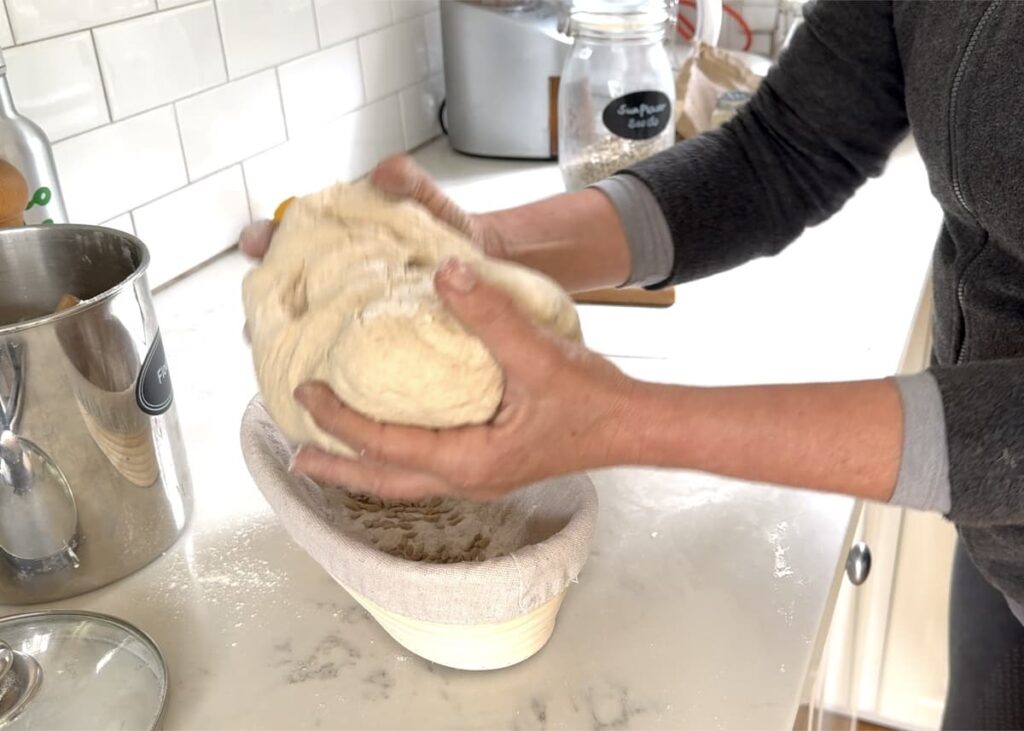
5. Final proof
Let the dough rest in the refrigerator for 4-12 hours. You can let it rest in there for even longer which may result in a more sour bread.
6. Preheat the Dutch oven
One hour before you’d like to bake your bread, place both the Dutch oven and the lid inside your oven and turn it to 450˚F.
7. Score the bread
Once you are ready to bake, remove the dough from the refrigerator. Carefully remove the hot Dutch oven from the oven and place it on a heat-proof surface. Carefully, dump the dough into the hot Dutch oven. With a lame or sharp knife score the top of the dough in your preferred pattern. Optional: mist the dough with water. Place the lid on the Dutch oven, place it in the hot oven, and bake covered for 30 minutes. After 30 minutes remove the lid and bake the bread for another half hour or until golden brown on top. Remove the sourdough loaf from the Dutch oven and let it cool on a wire rack.
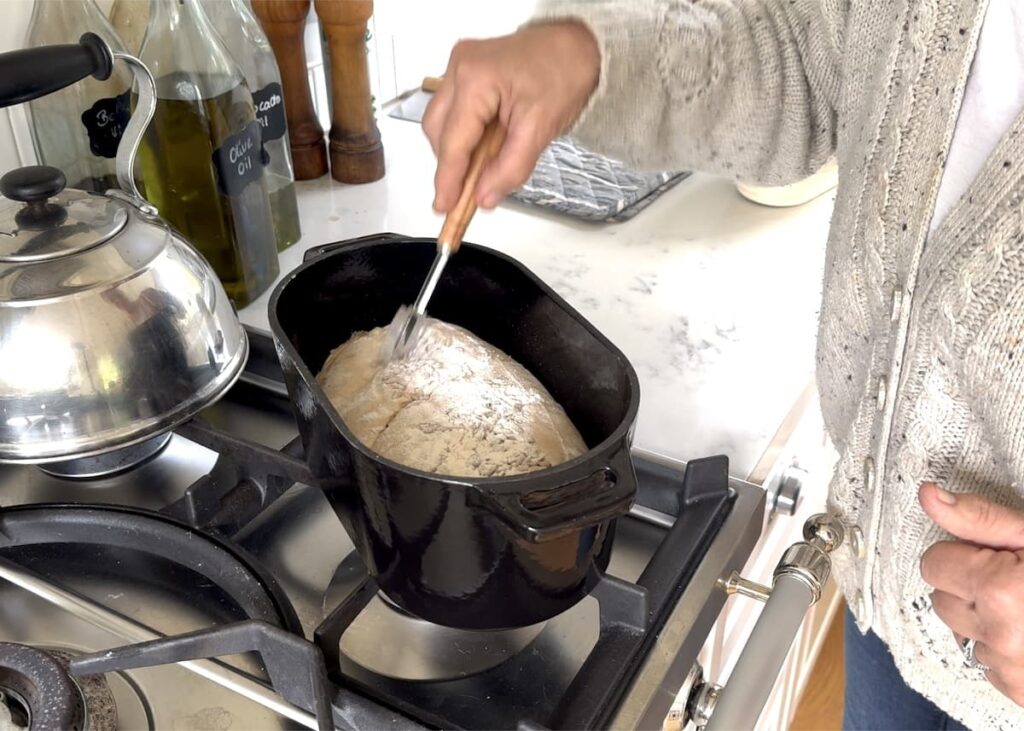
Seeded Sourdough Sandwich Bread
Ingredients
- 200 g active sourdough starter
- 525 g warm water
- 350 g all-purpose flour
- 350 g whole grain flour (such as spelt, kamut, emmer, rye or a combination)
- 20 g sea salt
- ½ c mixed seeds (sunflower, pumpkin, flax, etc)
Instructions
- Add sourdough starter and warm water to the bowl of your stand mixer. Mix until combined.
- Add the flours and mix on low speed until combined, then on medium-low for about 5 mins. Cover with a tea towel and let the dough rest for 1 hour.
- Now add the salt, mix well, cover with a tea towel and let the dough rest for 30 mins.
- With wet hands, lift the dough from the side of the bowl, fold it over towards the middle, turn the bowl one quarter, and repeat (stretch and fold). Cover with a tea towel and let the dough rest for 30 mins. Do 3 more stretch and folds.
- Cover the bowl with beeswax wrap or plastic and place the bowl in the refrigerator overnight or for about 8 hours.
- Remove the dough from the refrigerator. Heavily dust a work surface. Transfer the dough to the work surface. With lightly floured hands, gently stretch the dough into a big rectangle.
- Sprinkle the dough rectangle evenly with the seed mixture.
- Beginning with the long side, fold ⅓ of the dough over toward the middle. Repeat with the other side. Beginning with one short side, roll the dough into a log.
- Gently pull the dough log toward you multiple times while turning to create surface tension.
- Heavily dust an oval bannetton with flour. Place the dough log into the proofing basket with the smooth side down. Pinch any gaping dough together to form a seam.
- Place the dough in the refrigerator for 4-12 hours.
- Preheat your oven to 450˚F with an oval cast iron Dutch oven in the oven inside for 1 hour.
- Remove the dough from the refrigerator. Remove the preheated Dutch oven and carefully transfer the dough into the hot Dutch oven.
- With a bread lame or sharp knife, score the top of the dough. Put the lid on the Dutch oven.
- Bake covered for 30 mins. Remove the lid and bake uncovered for another 30 mins. Remove from the Dutch oven and let the bread cool on a wire rack
Notes
- if your dough is very sticky, resist the urge to add more flour, instead use wet hands for the stretch and folds
- you can also bake this bread in a rectangular loaf pan
- it can be helpful to line the Dutch oven with parchment paper for ease of removing the bread
- experiment with different types of grains and seeds

